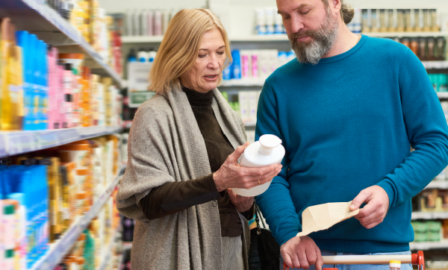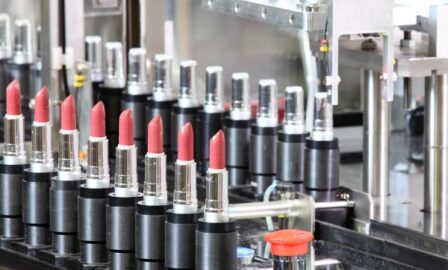Quality Regulations in the Beauty Industry: Exploring the Impact of MoCra
Wellness trends and the “Clean Beauty” movement have been on the rise for several years, especially given the beauty and personal care industry’s shift toward self-care. Much of this buzz over clean beauty is driven by social media influencers who assist in marketing the overwhelming number of cosmetic products available today to a target demographic — teenagers. And, there’s certainly no shortage of products being marketed to improve uneven skin tone or get stronger, smoother hair. Walking through beauty and personal care aisles today, whether in a drug store or a beauty store, can be intimidating – aisle upon aisle of carefully crafted products on display, often marketed with claims of being “eco-friendly” or with promises to “fix” imperfections. People with curly hair get drawn to products and tools that make their hair naturally straight. Those who battle acne or rosacea seek solutions that improve skin tone or hide imperfections. While these promises are intriguing, these key questions remain—are these claims truthful? Have these products been appropriately vetted to ensure they are safe for consumer use? What exactly are the quality regulations in the beauty industry?
The FDA’s Role in Achieving Clean Beauty Standards with MoCRA
Previously, the Food & Drug Administration (FDA) did not pre-approve cosmetic products before distribution in the U.S, nor did they specify any testing requirements for makeup or skincare brands to abide by. Essentially, cosmetic firms were solely responsible for ensuring adequate compliance, labeling and maintaining their own records to demonstrate the safety of their products. The beauty industry has historically lacked regulation and there was no standard definition for “clean.”
The Modernization of Cosmetics Regulation Act of 2022 (MoCRA) significantly expands the FDA’s control over cosmetic products since the 1938 Federal Food, Drug, and Cosmetic (FD&C) Act. Under MoCRA, the FDA requires companies to provide a detailed ingredient description for all U.S. cosmetic products, which they further define as a product with a predetermined formula that’s designed for cosmetic purposes. Any variation of that product, like different shades or scents, will also need to be registered individually. Additionally, cosmetic firms must report any serious adverse events to the FDA within 15 business days, as well as provide an accessible contact for customers to report any issues.
Beauty brands must prepare to adhere with the regulations the FDA plans to establish for Good Manufacturing Practice (GMP) as well. The FDA intends to revise and reissue the Draft Guidance for Industry: Cosmetic Good Manufacturing Practices and in 2024, the FDA issued updated instructions to report to MedWatch: The FDA Safety Information and Adverse Event Reporting Program. If any step in the production process fails to meet the standards set, your product can’t legally be distributed in the U.S.
MoCRA also mandates these additional provisions for cosmetics manufacturers —
- Safety substantiation: Firms must be able to provide clear evidence or records proving the “adequate substantiation” of the products safety.
- Labeling requirements: Product labels must now include adverse event reporting contact information and any fragrance allergens.
- New enforcement powers and records access for the FDA: The FDA now has the authority to access any information regarding your product or its ingredients, as well as recall the product if they feel it is misbranded.
Despite increased regulations, the FDA still has not explicitly defined what “clean” means in makeup or skincare. MoCRA may provide new guidelines for clean compliance, but the FDA still cannot restrict the use of toxic chemicals. The challenge for beauty brands now will be maintaining consumer trust through transparent manufacturing and marketing.
Embracing Transparency— The Industry’s Response to Stricter Regulations
Consumers today often raise concerns over the safety of products they wear daily, and while regulatory frameworks like MoCRA are pushing for greater accountability, it’s ultimately up to the brand to clarify their definition of clean. In a fragmented industry that is so highly unregulated, compliance and transparency can actually be seen as a source of sustainable competitive advantage.
When clean beauty brands openly communicate with consumers and disclose ingredient sourcing, they differentiate themselves from less transparent competitors and drive stronger connections with conscious shoppers. In fact, over 70% of shoppers today check the ingredient list before purchasing a product, demonstrating this clear demand for more informed decision-making. Brands that continue to hide behind a false label or fail to provide clear data to back up their claims risk facing consumer backlash and potential legal challenges, as seen with the class-action lawsuit over the Clean at Sephora label. In response, Sephora introduced new seals like Planet Aware to place greater restrictions on harmful ingredients and product sourcing. Similarly, Kim Kardashian’s rebranding of KKW Beauty to SKKN reflects this broader industry shift for cleaner formulas and highlights the benefit of science-backed, sustainable skincare solutions.
At its core, clean beauty is an industry regulation and consumer trust issue. Integrity in marketing must also be matched with integrity throughout the supply chain, ensuring ingredients are ethically sourced, formulas remain untampered with, and packaging aligns with sustainability goals. In reality, there’s nothing to gain by misleading your consumers. Deceptive marketing and unethical sourcing might offer short-term gains, but as regulations tighten and expectations for clean beauty continue, brands that fail to prioritize transparency will struggle to maintain credibility and relevance in the long run.
Building a Sustainable Regulatory Framework to Maintain Compliance
To align with MoCRA regulations and uphold credibility with consumers, companies must take a proactive approach to ensure compliance. Our consultants can help implement the following necessary frameworks to ensure product safety, quality consistency, and regulatory adherence in manufacturing.
- Establishing a Centralized Compliance System
Implement a unified reporting system to track adverse events and ensure a trained response team is in place to address incidents within the 15-day requirement.
- Preparing for Regulatory Inspections
Develop internal policies that align with MoCRA requirements to ensure you are inspection-ready at all times. This includes maintaining clear documentation, updating safety protocols, and conducting routine internal audits to identify compliance gaps before they become liabilities.
- Strengthening Supplier and Manufacturer Relationships
Establish contractual agreements with suppliers to guarantee ethical ingredient sourcing and compliance with MoCRA standards. Also, ensure manufacturers uphold Good Manufacturing Practices (GMP) by maintaining detailed ingredient records and safeguarding product integrity from sourcing to final production.
- Implementing Quality Testing Procedures in Manufacturing
To ensure product integrity, manufacturers must implement quality testing at every production stage. Before the product can even be sold in the US, manufacturers must complete several in-depth tests such as raw material evaluation, in-process checks, microbial testing and packaging analysis. Maintaining clear, consistent documentation and completing routine audits can improve visibility as the product is manufactured and sold to the consumer
- Ensuring Retail Compliance for Consumer Safety
Retailers must prioritize sourcing MoCRA-compliant products to prevent consumer dissatisfaction and legal risks. Transparent ingredient sourcing, labeling and marketing will further reinforce consumer trust in your brand.
By implementing these measures, companies can confidently navigate MoCRA regulations and further position themselves as leaders in the evolving clean beauty industry.
Looking Ahead for Clean Beauty Regulation
The introduction of MoCRA marked a transformative shift for the beauty and skincare industry, granting the FDA greater authority to regulate cosmetics and improve safety standards. With new standards set for product safety substantiation, adverse event reporting, and manufacturing processes, MoCRA establishes a robust regulatory framework for beauty brands to follow moving forward.
Regardless, companies must take the lead in prioritizing transparency—not only in their product formulas and operations but also in how they communicate their offers to consumers. Adhering to both regulatory and consumer expectations is key to sustaining a competitive advantage in today’s saturated clean beauty landscape.
Reach out to our quality and compliance experts to chat more.
Subscribe to Clarkston's Insights
Contributions from Bella Gordon




